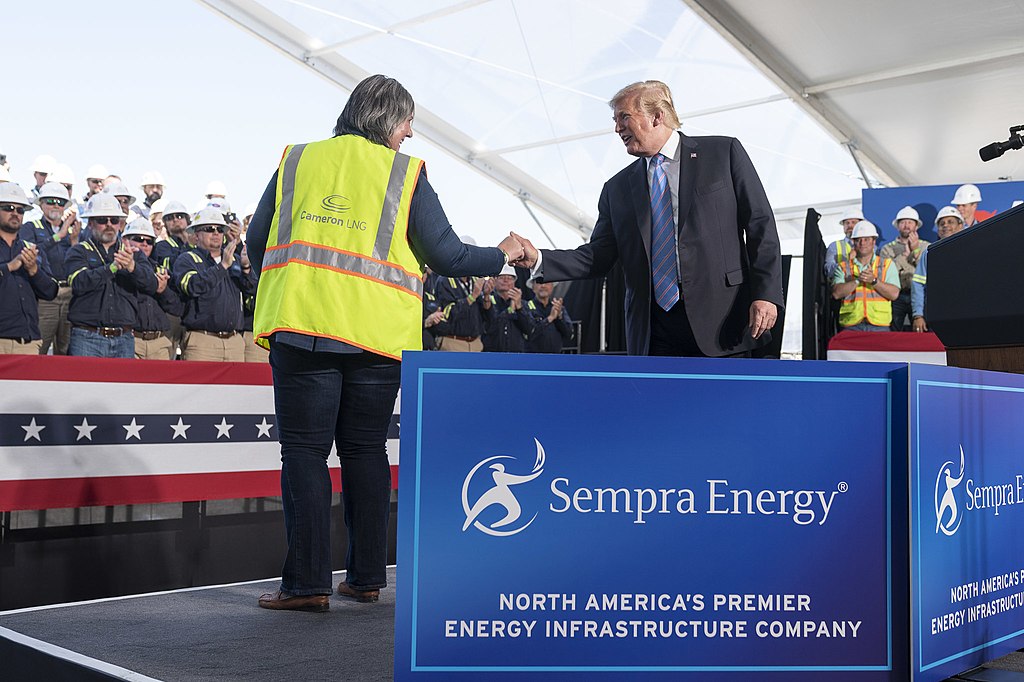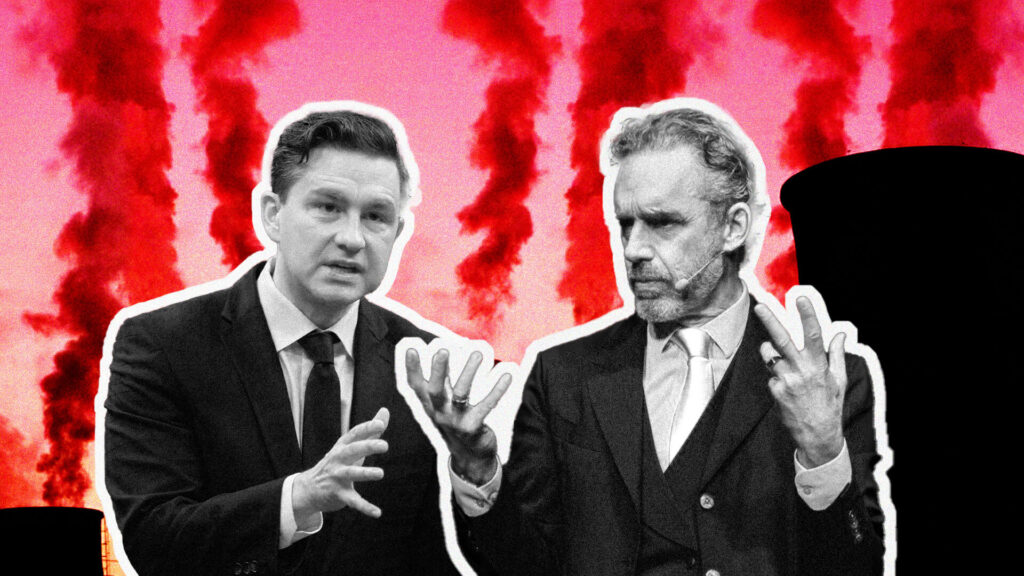President Trump has made clear that he wants to move the nation’s glut of fracked natural gas onto trains and then to ships for sale abroad.
In response to Trump’s April executive order pushing federal agencies to make that happen, the Department of Transportation (DOT) on October 18 announced a proposed rule for what it calls the “safe transportation of liquefied natural gas [LNG] by rail tank car.”
However, the proposed rule does not include any new safety regulations or require any safety testing for moving large quantities of this flammable cargo. Instead, the rule, coming from the U.S. Pipeline and Hazardous Materials Safety Administration (PHMSA) and Federal Railroad Administration (FRA), would allow the rail industry to move LNG in rail tank cars, labeled DOT-113, currently used to ship small quantities of other flammable gases super-cooled into liquid form.
While the DOT press release announcing the rulemaking emphasizes safety (the word or a variant is repeated no fewer than eight times), the actual document proposing this new rule details a worrisome scenario for what could happen if a train of LNG tank cars derails, breaching and releasing the liquefied fossil fuel — what PHMSA calls “Scenario 3”:
“Although Scenario 3 has a low probability, a breached inner tank during a transportation accident could have a high consequence because of the higher probability of a fire due to the formation of a flammable gas vapor/air mixture in the immediate vicinity of the spilled LNG. This probability is based on the likelihood of ignition sources (sparks, hot surfaces, etc.) being generated by other equipment, rail cars, or vehicles involved in a transportation accident that could ignite a flammable vapor cloud.”
According to PHMSA, the derailment of a train full of LNG could have “high consequences” — as in, a major fire or explosion — but because the agency says there are lower odds that it would happen, the public should feel assured this proposed transportation mode, using DOT-113 rail tank cars, is safe.
In the proposed rule, PHMSA also acknowledges that such “rare” accidents with DOT-113 tank cars can release large quantities of their cargo, which in this case would be natural gas, a flammable fuel.
“Though rare, derailments involving DOT-113 tank cars can result in large quantities of hazardous materials released, which can result from venting or breach of the inner tank shell.”
Train burning in Lac-Mégantic, Quebec, in 2013. Credit: Transportation Safety Board of Canada, via CC BY–NC–ND 2.0
A low-probability but high-consequence accident involving trains loaded with flammable liquids sounds a lot like the 2013 rail accident involving an oil train that derailed and exploded, killing 47 people in Lac-Mégantic, Quebec. While numerous oil trains have derailed, resulting in large fires, explosions, and oil spills over the past decade, a high-fatalities accident like the one in Lac-Mégantic has only happened once so far — but the consequences were, as PHMSA would put it, “high.”
“Safety is the number one priority of PHMSA,” PHMSA Administrator Skip Elliott, who is also a former CSX rail executive, said in the press release announcing the new LNG-by-rail rule.
There is a 60 day public comment period for this proposed rule that ends on December 23, 2019.
@HawleyMO @RoyBlunt @trump @fox @NBCNews @ABC @CBSNews
These rolling bombs will be coming through your communities
Rail News – USDOT rolls out LNG-by-rail rule. For Railroad Career Professionals https://t.co/EaQcFv8YoC
— Miles Long (@upsetvet79) October 22, 2019
PHMSA’s Misleading Conclusion on Safety of DOT-113 Tank Cars
In the proposed rule, PHMSA asserts, “The hazards of transporting LNG are no different than that of flammable cryogenic liquids already authorized for bulk rail transport.” Cryogenic materials are “liquefied gases that are kept in their liquid state at very low temperatures,” typically below -238 degrees Fahrenheit.
However, PHMSA then cites a supporting document that in no way backs up that claim but instead discusses using LNG as a fuel source for locomotives, which is distinct from trains transporting tank cars full of LNG.
The real issue — which PHMSA admits in other parts of the document — is that should LNG by rail be approved, the industry will likely be moving large volumes of the hazardous material because the U.S. is awash in natural gas produced by fracking. With low domestic prices for natural gas, the oil and gas industry is desperate to move that oversupply to ports for export. PHMSA cites LNG export multiple times as a reason why approving LNG by rail is necessary.
The proposed rule states:
“While PHMSA expects LNG will initially move in smaller quantities (i.e., a few tank cars) as part of manifest trains, it is uncertain whether LNG will continue to be transported in those quantities or if LNG by rail will shift to be transported using a unit train model of service, and if so, how quickly that shift will occur.”
Unit trains are long trains of a single product, such as crude oil or ethanol, often of a 100 cars or more. The other cryogenic liquids being moved by rail are not moved in large quantities in unit trains.
But industry has already expressed interest in moving in that direction. As DeSmog reported in June, Energy Transport Solutions LLC currently has a special permit application pending that would allow the company to transport LNG “in unit trains 100 cars long and for the express purpose of moving LNG to export facilities.”
Puget Sound Energy LNG Protest in Washington state. Credit: Seattle City Council, CC BY–NC–ND 2.0
Another potential issue is the number of rail tank cars available to meet the expected demand, and what the past history based on that small number can say about future scenarios. PHMSA does note that if this proposed rule is approved, “the numbers of DOT-113 tank cars in operation under the proposed regulatory change could increase well beyond the numbers of DOT-113 tank cars currently in operation.”
However, there is no viable business model for moving only small amounts of LNG.
Rail safety expert Fred Millar critiqued PHMSA for basing its conclusion that shipping large amounts of LNG in DOT-113 tank cars is safe on the small sample size currently in use.
“PHMSA pretends to do a hazard assessment of the proposed LNG by rail, and to judge the DOT-113 cryogenics rail tank car safe enough for proposed LNG transport,“ Millar told DeSmog via email. “But they neglect to say how tiny the historical experience is with this tank car, some 15,000 total flammable cargoes per year.”
To put that in perspective, in 2008, 9,500 carloads of crude oil moved by rail in the U.S. And there were no major accidents and explosions in 2009 involving oil trains. But by 2014, nearly 500,000 carloads of crude oil moved by rail in unit trains, a year marked by several major accidents and explosions.
The high consequence outcomes that PHMSA calls low probability become much more likely at high volumes, with the prospect of trains 100 cars long carrying LNG.
BREAKING: Trump’s DOT just announced it’s moving forward on a plan to move LNG by rail car, which Chair @RepPeterDeFazio strongly objects to due to unanswered questions about the risk to public safety. His floor speech about why this is such a dangerous below. pic.twitter.com/aBQgmCfhuo
— Committee on Transportation and Infrastructure (@TransportDems) October 18, 2019
LNG by Rail Likely More Dangerous Than Oil ‘Bomb Trains’
For the last five years, DeSmog has covered the many accidents involving trains of crude oil, in the process documenting the very real risks of these trains and the ways proper regulation could avoid or reduce those risks. However, crude oil is likely less of a danger than LNG when it comes to the physical properties of the two materials.
In early 2017 when DeSmog first highlighted rail industry efforts to approve LNG by rail, we laid out the potential risks:
“In 2014 there was an explosion at an LNG facility in Washington state. Risks of a second larger explosion resulted in authorities evacuating everyone within a two mile radius. Reuters reported, ‘A county fire department spokesman said authorities were concerned a second blast could level a 0.75 mile ‘lethal zone’ around the plant.’”
With oil trains, safety officials recommend evacuating everyone within a half mile of the tracks — an area known as a blast zone, not a “lethal zone.” The potential scale of damage of an LNG accident could be far greater than an oil train.
Nevertheless, PHMSA and the Federal Railroad Administration proposed no new safety regulations to ensure the lessons of oil trains are applied to LNG by rail — not limiting train length, not requiring modern electronically controlled pneumatic brakes, not instilling new speed limits in populated areas. But then again, the Federal Railroad Administration in the Trump era has specifically said its purpose is to remove regulations and let the railroads volunteer to improve safety.
Fred Millar accurately summed up what is happening, telling DeSmog, “This PHMSA/FRA rulemaking is evidence of Big Oil/Gas hurriedly queuing up while the Trump Bank Window for Regulatory Withdrawals is obviously Wide Open for Business.”
Or to put it more simply: profits first.
Main image: President Donald Trump delivers remarks on promoting energy infrastructure and economic growth May 14, 2019 at the Cameron LNG Export Terminal in Hackberry, Louisiana. Credit: White House/Shealah Craighead, public domain
Subscribe to our newsletter
Stay up to date with DeSmog news and alerts









